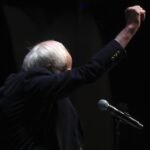Now Reading: Supreme Court ruling expands Trump’s authority to fire officials
-
01
Supreme Court ruling expands Trump’s authority to fire officials
Supreme Court ruling expands Trump’s authority to fire officials

Article Summary
In a significant legal development, a divided court has issued an emergency order permitting President Trump to remove Rebecca Kelly Slaughter, a commissioner of the Federal Trade Commission (F.T.C.). This controversial decision signals that the court is poised to reevaluate established legal precedents regarding presidential powers, particularly those linked to the termination of federal agency officials. The court is set to hear arguments on this matter in December, illustrating a strategic inclination within the majority to challenge the limitations on presidential authority set forth in landmark cases.
The case stems from Trump’s dismissal of Slaughter and Alvaro Bedoya, both Democratic commissioners, in March. The F.T.C., responsible for enforcing antitrust and consumer protection laws, is traditionally composed of five members, with a political composition favoring the president’s party. Following their ousting, Slaughter and Bedoya voiced their intentions to legally contest the removals, citing the precedent established in the 1935 Supreme Court case, Humphrey’s Executor v. United States, which underscored protections against capricious presidential dismissals.
Justice Elena Kagan expressed strong dissent against the majority’s interpretation of presidential powers. She criticized her conservative colleagues for undermining the independence of federal agencies, claiming that the court’s actions effectively hand over control of these entities to the president, contrary to the intentions of Congress. Kagan argued that this diminishes the bipartisanship essential for the functioning of agencies like the F.T.C., allowing the president broad discretion to remove members at will.
This shift in judicial philosophy reflects a broader trend where the conservative majority appears to prioritize an expansive view of executive power over the foundational principles of constitutional governance. The power dynamics at play threaten to reshape the checks and balances designed to prevent any one branch of government from wielding excessive authority, raising concerns about the implications for future governance and agency independence.
The case and its repercussions underscore the enduring conflict between different interpretations of presidential authority and the role of the judiciary in upholding democratic norms. As the court prepares to revisit this critical precedent, the discourse surrounding the balance of power between the executive branch and independent federal agencies is likely to intensify, inviting scrutiny from various stakeholders about the preservation of accountability in government.













